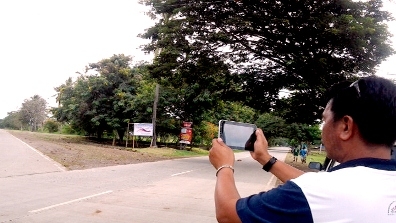If you’re into web-based maps like Google’s to track your travels across the globe, or if you’ve participated in a crowd-sourcing project to report a bribe, then you’re already familiar with uploading photos and other information that’s location-specific. What you probably don’t know is that this tool can also be used for monitoring government projects in far-flung places.
Employees from the Department of Agriculture (DA) and local governments in the Philippines didn’t know either. “This too shall pass,” was the general comment and frame of mind of most employees recalls engineer Arnel de Mesa, when he first broached the idea of using geo-tagging in 2010 to monitor a World Bank-assisted project.
De Mesa is the deputy program director for the Second Mindanao Rural Development Program or MRDP2 being implemented by the DA. Through the involvement of local governments and rural communities, the project has been able to raise the average household income of beneficiaries by 16% from 2007 to 2011.
Nowadays, de Mesa’s team is leading efforts to train their co-workers within the agency and outside the department on the use of geo-tagging for project management. Their innovative use of the technology is the first among government agencies in the Philippines, and among the pioneers in the region.
De Mesa and his team had been experimenting with a variety of complex systems that would allow them to effectively supervise, validate and evaluate about 500 rural infrastructure subprojects – from identification, procurement, implementation, and up to the evaluation phase. De Mesa and his Mindanao-based team finally found the answer in geo-tagging technology, which he said government workers assigned to the program later warmed up to.
The geo-tagging process involves attaching location-specific information such as geographical coordinates to pictures, videos and even SMS messages. Users would need a GPS-enabled phone and internet connection to upload multimedia to a web-based application such as Google, which provides the platform to geo-tag at no cost.


